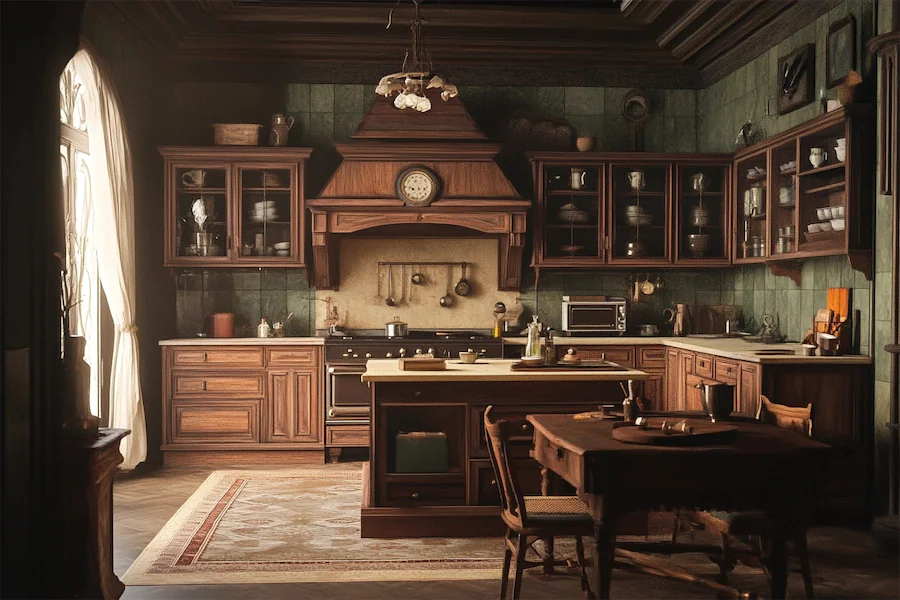A Victorian kitchen reflects the opulence and intricate design characteristic of the Victorian era (1837–1901). This article explores the history, key features, applications, and considerations when designing a Victorian kitchen.
Introduction to Victorian Kitchens
Victorian kitchens are renowned for their ornate details, rich color palettes, and emphasis on functionality. They often feature intricate woodwork, decorative moldings, and a blend of natural materials, creating a warm and inviting atmosphere. In modern homes, Victorian kitchen designs can be adapted to incorporate contemporary conveniences while preserving historical charm.
History and Origins of Victorian Kitchens
During the Victorian era, the kitchen was primarily a workspace for household staff in affluent homes, equipped with large cooking ranges and separate sculleries for cleaning and food preparation. In middle-class households, the kitchen served as a multifunctional area for cooking, dining, and socializing. The design emphasized practicality, with a focus on maximizing efficiency and organization.
Key Features of Victorian Kitchens
Victorian kitchens are distinguished by several hallmark features:
- Ornate Cabinetry: Cabinets often feature intricate carvings, raised panel doors, and decorative hardware, showcasing the craftsmanship of the era.
- Rich Color Palettes: Utilization of deep, earthy tones such as burgundy, forest green, and navy blue, complemented by neutral shades, to create a warm and sophisticated ambiance.
- Natural Materials: Incorporation of materials like wood, stone, and cast iron, reflecting the Victorian appreciation for natural beauty and durability.
- Decorative Backsplashes: Use of patterned tiles or embossed metal panels as backsplashes, adding visual interest and texture to the space.
- Traditional Fixtures: Inclusion of vintage-inspired faucets, sinks, and lighting fixtures, often in brass or copper finishes, to enhance the period aesthetic.
Applications of Victorian Kitchens
The versatility of Victorian kitchen designs allows them to be adapted to various settings:
- Historic Homes: Restoring or renovating kitchens in period homes with Victorian features can enhance the property’s original character.
- Modern Residences: Incorporating Victorian design elements can add a touch of elegance and timelessness to contemporary kitchens.
- Eclectic Spaces: Blending Victorian features with other design styles can create a unique and personalized kitchen environment.
Considerations When Choosing a Victorian Kitchen
When planning a Victorian kitchen, consider the following:
- Authenticity: Incorporate genuine or reproduction Victorian elements to maintain historical accuracy and integrity.
- Functionality: Ensure that modern appliances and conveniences are seamlessly integrated without compromising the Victorian aesthetic.
- Maintenance: Be prepared for the upkeep of natural materials and intricate details, which may require regular maintenance to preserve their appearance.
Conclusion
Victorian kitchens offer a blend of historical elegance and functional design, creating spaces that are both beautiful and practical. By understanding their history, key features, and applications, you can design a kitchen that reflects the timeless appeal of the Victorian era while accommodating contemporary needs.
